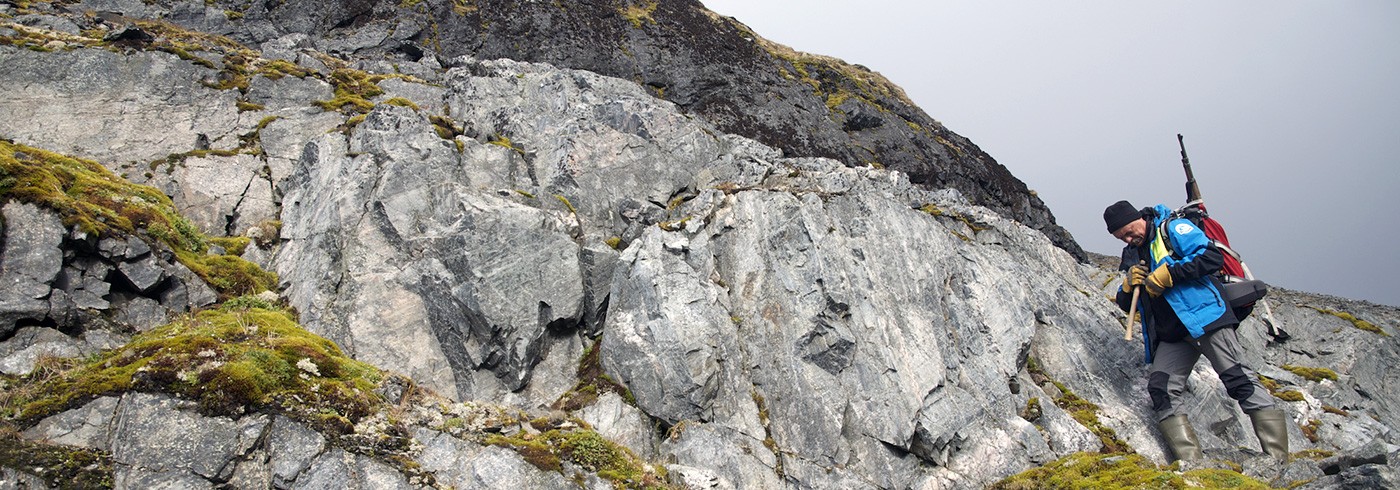A bang woke us up in the night – Jarek and I jumping out of our tents with the rifles ready. But it was just the fox who is frequently visiting the camp area, this time pulling one of the lower trip wires… Majek didn’t even hear the bang and, hence, we decided that it’s better that he will not take a gun during nighttime.
The weather was fine in the morning, cloudy but with little wind. We went southwards to Murraybreen (breen = glacier) which we crossed to reach the base of Bouréefjellet (fjell = mountain). The outcrops on this side are difficult to reach, dangerous because of loose material and the birds colony above, and everything pretty shitty because of the latter one. However, already the boulders were very promising garnet-biotite schists and meta-dolerites. Also brown and green varieties of a conglomerate which is similar in composition and deformation to the Slyngfjellet Conglomerate described in southern Spitsbergen. We took some samples since these rocks obviously came from Bouréefjellet above, just in case that we will not be able to reach these rocks in outcrop.
We continued around the mountain, climbing a retreating small glacier and increasingly steep snow fields to get to the outcrops. What a disappointment when we discovered that we were in rather low grade metamorphic rocks! However, it was a beautiful place to unpack the tripod and panorama head to document the work of the geologists here in this beautiful scenery – the steep mountain side and the view to the mountains of western Spitsbergen!
Back to geology – all rocks here underwent several deformations and are heavily dislocated and ”mixed”. Soon, after traversing the steep slope below the outcrops we came into high grade metamorphic rocks and our petrologists were very satisfied. Back on Murraybreen we all agreed that this was about the limit what can be done in a responsible way with our equipment. For more we would need climbing gear. Finally, on the way home, we got the sunshine we deserved. 🙂
In the evening I called home to get a weather report via yr.no. This took some time via telephone but was well worth it for planning the rest of our stay here. Unfortunately, higher wind speeds and four days of rain are predicted. But first two days like today. Tomorrow we plan to use the Zodiac to see more Pinkie rocks further south.
Henning Lorenz, Uppsala universitet









